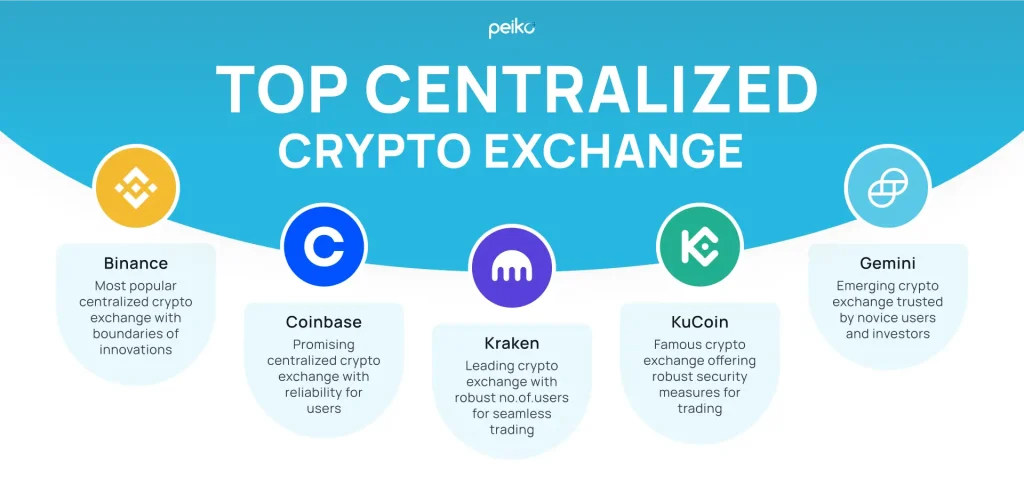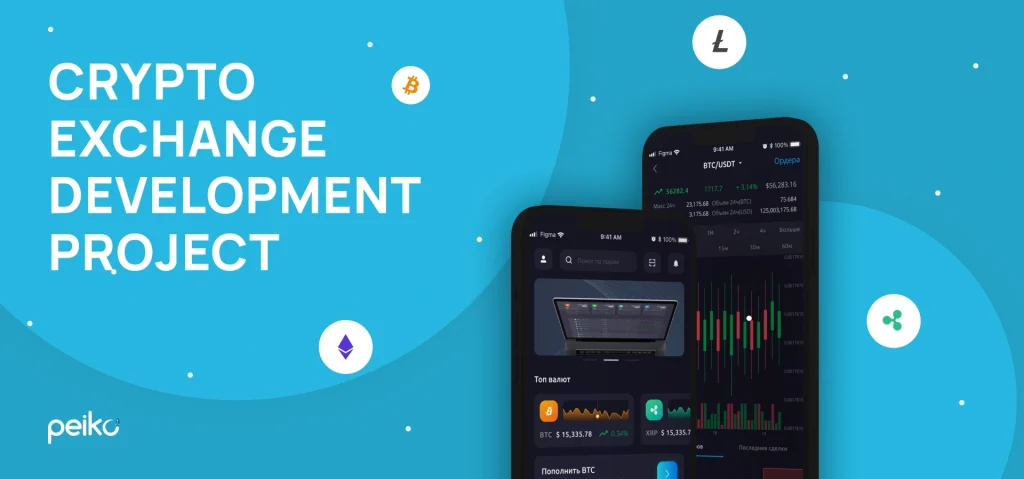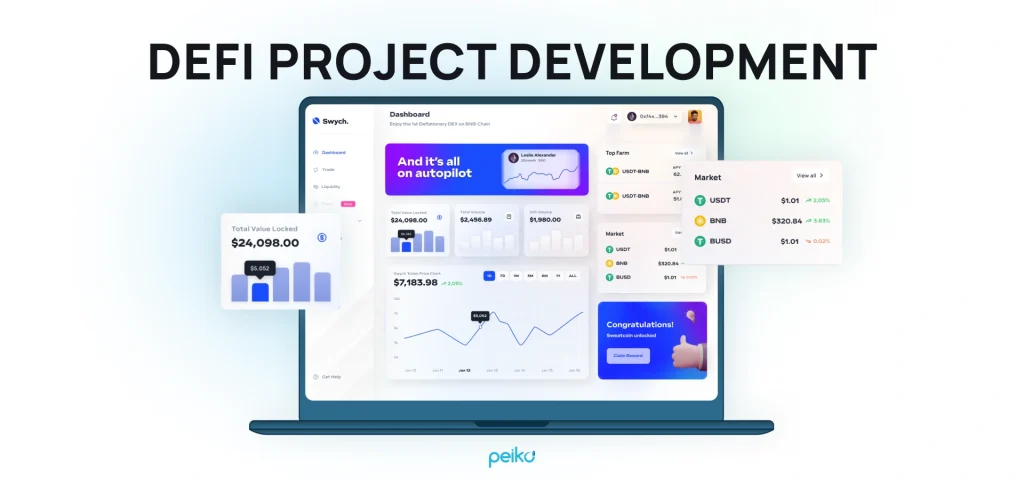Ever wondered how conventional finance meets the cutting-edge world of cryptocurrencies? This is about the CeFi technology.
CeFi, or centralized finance, is a vital element in the crypto universe that merges traditional financial practices with modern technology. In contrast to decentralized models, CeFi involves financial services managed by central authorities, such as exchanges (CEXs) and lending platforms. These platforms streamline transactions and provide user support, relying on established systems and regulatory frameworks.
In this article, we will consider CeFi’s features, delve into its role within the crypto landscape, and illustrate how it connects conventional finance with the innovative world of digital assets. Let’s start!
What is CeFi?
We will start with the CeFi meaning. CeFi is a financial ecosystem that leverages cryptocurrency and blockchain technology to offer conventional financial services.
CeFi: how it functions in the world of cryptocurrency
Unlike DeFi (decentralized finance), which operates without a central authority, CeFi platforms are managed by a single entity, such as a company or a team of developers. This centralization means these entities oversee and manage the platform and users’ funds.

When engaging with a CeFi platform, such as a centralized cryptocurrency exchange, users trust these intermediaries to protect their assets and handle transactions. CeFi is often favored by newcomers for its familiar interface, ease of use, and seamless integration with traditional fiat currencies. Examples of CeFi crypto platforms include Kraken, Coinbase, and others.
By the way, CeFi platforms greatly outnumber DeFi in terms of both the number of users and the total market size. In 2023, the market capitalization of CeFi stands at $342 billion, significantly surpassing the DeFi market cap, which is $16 billion.
Core characteristics of CeFi platforms
Let’s consider the main characteristics of CeFi platforms:
- Centralized oversight: These platforms are managed by a single authority that governs the platform’s infrastructure, handles transactions, and oversees user funds.
- Cross-chain support: CeFi platforms provide support for cross-chain interactions. This functionality boosts liquidity and enables users to effortlessly trade or transfer assets across multiple platforms.
- Revenue generation through fees: These platforms commonly earn revenue by imposing fees for transactions, withdrawals, and other services. These charges help cover operational expenses and contribute to the platform’s profitability.
- Control over asset listing: CeFi platforms hold the power to determine which assets are added or removed, offering users a carefully curated array of cryptocurrencies.
- Fund security and custody: The central entity is responsible for protecting funds, managing private keys, and enforcing security protocols.
- Regulatory alignment: CeFi platforms comply with financial regulations, including anti-money laundering (AML) and know-your-customer (KYC) standards.
- Fiat currency integration: CeFi solutions simplify transactions between cryptocurrencies and traditional fiat currencies for easier market access.
- Intermediary dependence: Users must trust the platform’s central authority for trade execution, transaction processing, and account management.
Role of intermediaries in CeFi
In CeFi, intermediaries are crucial in managing and facilitating transactions within the crypto ecosystem. These intermediaries, typically the centralized platforms themselves, handle essential functions such as executing trades, processing deposits and withdrawals, and safeguarding user assets.
Key features of CeFi
Now, let’s consider the main features of CeFi crypto solutions.
User accounts and KYC procedures
CeFi platforms require users to set up accounts and undergo KYC checks. This process means that users provide personal information and documents for identity verification and regulatory compliance. KYC procedures are designed to prevent fraud and confirm the legitimacy of all users.
Custodial services
In CeFi, custodial services are provided by the platform, which manages and protects user assets. This includes securely storing digital assets and handling private key management. Such services offer enhanced security and convenience, as users do not need to manage their own private keys.
Fiat on/off ramps
CeFi blockchain platforms typically offer fiat on/off ramps, enabling users to convert cryptocurrencies to and from traditional fiat currencies seamlessly. This functionality streamlines the deposit and withdrawal process, facilitating easier entry and exit from the crypto market for users.
Customer support
Comprehensive customer support is what distinguishes the CeFi platform. These platforms typically offer multiple support options, such as a chat or email. Through these channels, users can obtain help with account issues, transactions, and tech problems. This support ensures a more seamless and user-friendly experience.
Popular CeFi services
These services are designed to provide users with familiar financial tools and opportunities in a regulated environment. Let’s consider the most popular CeFi offerings:
Centralized crypto exchanges
Centralized exchanges and platforms are fundamental to CeFi. These digital hubs allow users to purchase and trade cryptocurrencies. Examples include prominent exchanges like Coinbase and Binance.
Unlike their decentralized counterparts, CeFi exchanges are governed by a single entity that controls asset custody, trade execution, and overall platform operations. This centralized oversight ensures a smooth user experience and efficient transaction handling but necessitates that users trust the exchange with their assets.

Lending and borrowing platforms
CeFi lending and borrowing services allow users to either generate interest on their cryptocurrency assets or obtain loans by using their holdings as collateral. Platforms like BlockFi and Celsius provide interest-bearing accounts and facilitate loans backed by crypto assets. These services blend conventional financial operations with digital currencies, offering a regulated and organized framework for managing investments.
Yield farming opportunities
Yield farming in CeFi involves earning returns by investing in or staking various cryptocurrencies. Services like Nexo and Crypto.com present opportunities for users to generate passive income through interest or rewards. Unlike DeFi yield farming, ce finance yield farming is managed by centralized organizations, offering a more regulated and straightforward approach to earning returns.
CeFi vs. DeFi: a comparison
CeFi and decentralized finance are two distinct approaches to digital financial services. In this part of the article, we will provide you with a clear comparison of these approaches.
Key differences of DeFi vs CeFi in approach and philosophy
CeFi relies on a central authority to manage and oversee transactions, user funds, and regulatory compliance. This model mirrors traditional financial systems, providing a more familiar experience for users and integrating with fiat currencies. The centralized nature offers convenience and regulatory oversight, but places trust in a single entity.
DeFi operates on blockchain technology with a focus on decentralization. By using smart contracts and distributed networks, DeFi platforms eliminate intermediaries and empower users with more control and transparency. The approach is rooted in the principles of openness and permissionlessness, offering a different kind of financial freedom. The examples of decentralized platforms include the Forcefi crypto incubator, the Uniswap crypto exchange, MarkerDAO, and others.
Strengths and weaknesses of DeFi and CeFi
Understanding the pros and cons of CeFi and decentralized finance is essential for understanding which approach will suit the best for your future blockchain business project.
Here are the CeFi benefits and drawbacks:
CeFi strengths
- Ease of use: CeFi blockchain platforms are often designed with user-friendly interfaces and comprehensive customer support, making them accessible to those new to cryptocurrency.
- Regulatory adherence: These platforms typically comply with existing financial regulations, which can enhance user trust and security.
- Fiat integration: CeFi services frequently provide straightforward methods for converting between fiat currencies and digital assets.
CeFi weaknesses
- Centralization risks: The central control structure introduces potential vulnerabilities, such as security breaches and regulatory challenges. However, there are undoubtedly benefits of centralization, like fund insurance, liquidity control, and promised protection against hacking. Everyone chooses what suits it best.
- Limited transparency: Users must place trust in the platform’s management. This can lead to diverse concerns about transparency and control over assets.
Below is a comprehensive view of DeFi’s pros and potential shortcomings.
DeFi strengths
- Decentralization: DeFi vs traditional finance platforms are built on blockchain networks without central authority, reducing risks associated with single points of failure and increasing system resilience.
- Enhanced transparency: The use of smart contracts and open-source code ensures greater transparency and allows users more control over their financial activities.
- Innovative solutions: DeFi is known for its rapid innovation, offering a broad array of financial products and customizable services.
DeFi weaknesses
- Complexity and risk: The decentralized nature can result in a steeper learning curve and potential risks related to smart contract bugs and operational failures.
- Regulatory ambiguity: DeFi platforms often operate in a regulatory grey area, leading to legal problems and compliance challenges.
- Scalability concerns: Some DeFi platforms experience scalability issues and high transaction costs, particularly on congested blockchains like Ethereum.
The future of CeFi in сrypto
What to expect in the near future in the development of the CeFi technology? Let’s discover the main innovation to wait for.
Evolving regulatory landscape
As cryptocurrencies rise, regulations for ce finance are becoming clearer. Governments are working to establish frameworks that address anti-money laundering, fraud, and investor protection. This progress promises to attract more institutional and public interest to CeFi.
Integration with conventional finance
CeFi is expected to integrate more closely with traditional financial systems. Increased collaboration between CeFi platforms and financial institutions could lead to smoother fiat-to-crypto transactions and innovative financial products.
Potential for hybrid CeFi with DeFi models
In the future, we can see many hybrid models that combine CeFi DeFi. These models could blend CeFi’s regulatory compliance and user-friendly features with DeFi’s decentralized innovation. The result of the DeFi CeFi combination would be advanced, flexible financial solutions that enhance both user experience and industry capabilities.
Why choose Peiko for blockchain development
Peiko is your top choice for blockchain development services due to our profound expertise and ability to deliver modern and efficient crypto solutions. Whether you need a reliable crypto exchange or crypto wallet app, or the token creation, we can help you with any request.
We are proud of the project we developed for the crypto sector. For example, Quan2um, a cryptocurrency exchange platform we created, is a fast and user-friendly app that supports trading in Bitcoin, Bitcoin Additional, and other altcoins. The app features real-time price updates, social media-based authentication, and a comprehensive KYC system. The customer was satisfied with the project and now it successfully operates and drives revenue.

Swych is another one of the top blockchain projects we built. This is a dynamic decentralized exchange platform that draws inspiration from established platforms like PancakeSwap but with distinctive customizations and enhanced features, including interactive gaming elements. Our team built a reliable and secure trading environment, focusing on seamless token trading and liquidity contributions.

Conclusion
CeFi is a powerful technology that blends the familiarity of traditional financial services with the innovations of crypto assets. By offering user-friendly platforms, secure custodial services, and smooth integration with traditional finance, CeFi effectively bridges the gap between conventional banking and the evolving crypto landscape. The future of CeFi is set to offer even more reliable and versatile solutions.
For those ready to dive into CeFi or seeking expert guidance on blockchain development, Peiko is your ideal partner. Contact us today to discover how we can turn your blockchain vision into a profitable project that drives revenue.










